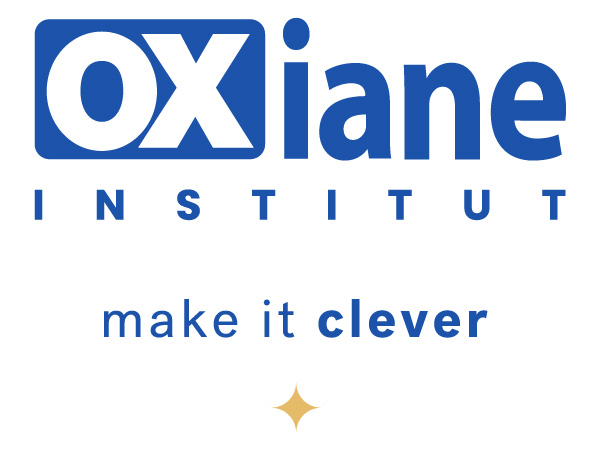-
Filière :
Développement logiciel
-
Sous-filière :
Microsoft
-
Référence
MS-AZ040
-
Durée
3 jours (21 h)
-
Prix par personne HT
2 050 € HT
 Description
Description
Il s’agit d’un cours de 3 jours qui apprendra aux participants à automatiser les tâches administratives en utilisant Windows PowerShell 5.1. Les participants acquerront des compétences fondamentales en scripting, telles que la création de fonctions avancées, l’écriture de scripts de contrôle et la gestion des erreurs de script.
Les participants apprendront également à travailler avec Windows PowerShell Workflow, l’API REST, ainsi que des fichiers de données au format XML et JSON. Ils découvriront l’utilisation de nouveaux outils d’administration, tels que Desired State Configuration (DSC) et Just Enough Administration (JEA), pour configurer et sécuriser des serveurs.
 Objectifs pédagogiques
Objectifs pédagogiques
- Pouvoir décrire les fonctionnalités de Windows PowerShell et les utiliser pour exécuter et rechercher des commandes de base
- Identifier et exécuter les applets de commande pour l’administration du système local
- Travailler avec le pipeline Windows PowerShell
- Comprendre comment utiliser PSProviders et PSDrives pour travailler avec d’autres formes de stockage
- Pouvoir interroger les informations système à l’aide de WMI et CIM
- Apprendre à travailler avec des variables, des tableaux et des “tables de hachage”
- Ecrire des scripts de base dans Windows PowerShell
- Comprendre comment administrer des ordinateurs distants avec Windows PowerShell
- Gérer les ressources Azure avec PowerShell
- Gérer les services Microsoft 365 avec PowerShell
- Utiliser des tâches en arrière-plan et des tâches planifiées
 Public cible
Public cible
- Professionnel de l’informatique
 Pré-requis
Pré-requis
- Disposer d’une bonne expérience de l’administration de postes de travail et de serveurs sous Windows et qui veulent en savoir plus sur l’administration avec PowerShell
- Cette formation convient également aux administrateurs d’autres solutions Microsoft telles que Exchange Server, SharePoint Server, SQL Server et System Center.
 Programme de la formation
Programme de la formation
Module1
PRISE EN MAIN DE WINDOWS POWERSHELL
- Présentation de Windows PowerShell
- Comprendre la syntaxe des commandes Windows PowerShell
- Rechercher des commandes et obtenir de l’aide dans Windows PowerShell
Module2
WINDOWS POWERSHELL POUR L’ADMINISTRATION DES SYSTÈMES LOCAUX
- Applets de commande d’administration des services de domaine Active Directory
- Applets de commande de configuration réseau
- Applets de commande d’administration de serveur
- Windows PowerShell dans Windows 10
Module3
UTILISATION DU PIPELINE WINDOWS POWERSHELL
- Comprendre le pipeline
- Sélectionner, trier et mesurer des objets
- Filtrer les objets hors du pipeline
- Énumérer les objets dans le pipeline
- Envoyer et transmettre des données de pipeline en sortie
Module4
UTILISATION DE PSPROVIDERS ET PSDRIVES
- Utilisation de PSProviders
- Utiliser les lecteurs PS
Module5
INTERROGATION DES INFORMATIONS DE GESTION À L’AIDE DE CIM ET WMI
- Comprendre CIM et WMI
- Interroger les données à l’aide de CIM et WMI
- Apporter des modifications à l’aide de CIM et WMI
Module6
UTILISATION DE VARIABLES, DE TABLEAUX ET DE TABLES DE HACHAGE
- Utiliser des variables
- Manipuler des variables
- Manipuler des tableaux et des tables de hachage
Module7
SCRIPTS WINDOWS POWERSHELL
- Introduction aux scripts avec Windows PowerShell
- Constructions de script
- Importer des données à partir de fichiers
- Accepter l’entrée de l’utilisateur
- Dépannage et gestion des erreurs
- Fonctions et modules
Module8
ADMINISTRATION D’ORDINATEURS DISTANTS AVEC WINDOWS POWERSHELL
- Utiliser la communication à distance Windows PowerShell de base
- Utiliser des techniques avancées de communication à distance Windows PowerShell
- Utiliser les sessions PS
Module9
GESTION DES RESSOURCES AZURE AVEC POWERSHELL
- Azure PowerShell
- Présentation d’Azure Cloud Shell
- Gérer les machines virtuelles Azure avec PowerShell
- Gérer le stockage et les abonnements
Module10
GESTION DES SERVICES MICROSOFT 365 AVEC POWERSHELL
- Gérer les comptes d’utilisateurs, les licences et les groupes Microsoft 365 avec PowerShell
- Gérer Exchange Online avec PowerShell
- Gérer SharePoint Online avec PowerShell
- Gérer les équipes Microsoft avec PowerShell
Module11
UTILISATION DES TÂCHES EN ARRIÈRE-PLAN ET DES TÂCHES PLANIFIÉES
- Utiliser les tâches d’arrière-plan
- Utiliser les tâches planifiées
Ce programme prépare à l’examen Microsoft. La certification est en option, avec un voucher d’examen disponible au tarif de 210 euros.
Qualité
Cette formation est accessible aux personnes en situation de handicap, nous contacter en cas de besoin d’informations complémentaires.
Programme mis à jour le

